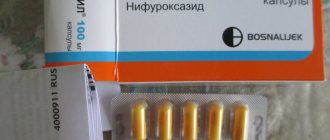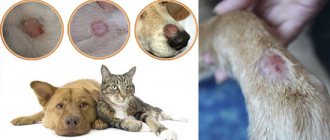Features of the puppy's diet
The daily diet for puppies from 1 to 12 months is compiled taking into account age and physiological needs. In order for babies to have enough strength and energy, they need to eat a lot, but their stomach is still too small, so the daily portion should be divided into 5-6 meals. The products must be fresh, since the digestive system is still very sensitive: it reacts sharply to any errors in nutrition.
Puppies need a large amount of proteins, vitamins and microelements, while their excess can be harmful to an adult animal, so food for puppies and adult dogs differs significantly from each other.
To ensure your pet grows healthy and energetic, follow these recommendations:
- create a feeding schedule;
- give food at room temperature;
- if the puppy does not eat the entire portion at one time, you need to make it smaller;
- place the bowl at chest level to avoid problems with posture;
- Make sure your pet always has clean water;
- if one feeding is missed, there is no need to double the next portion: continue feeding as usual;
- the daily diet should consist of 2/3 protein foods;
- Portions should be calculated based on weight and age, not height.
Owners can buy ready-made dry food for puppies or create a daily menu from natural products. The first option is more expensive, but less troublesome.
How often to feed a newborn puppy?
A newborn puppy is a small, helpless creature that requires special attention and care. Mother's milk is the only food that helps the puppy gain strength in the first weeks of life.
For the first seven days, the baby suckles from its mother's milk every two hours. He eats until his tummy is round, and then sleeps peacefully.
The amount of milk per day in the first week is 200-250 ml. The next week, the puppy is already suckling milk after three hours, that is, eight times a day. By the fourth week, the number of feedings reaches six times and, accordingly, the amount of milk consumed per day is 400 - 500 ml. In the first seven to ten days from birth, with normal nutrition, the puppy should double its original weight.
How often should I feed my newborn puppy when he is trying to eat on his own? Since the dog’s milk for puppies becomes less every week, the babies can be fed from the age of two weeks.
As complementary food, you can use goat's milk, which is closest in quality to dog milk. When the puppy reaches three weeks of age, liquid porridge is added to its diet, which can be given initially at fifty grams per day and gradually increased to 250, divided into three doses per day.
Regardless of milk consumption, from the age of three weeks the puppy must be given water.
How much should a newborn puppy eat? As soon as the puppy has learned to lap from a bowl on his own, you can add white bread and a raw chicken egg to his milk. From three weeks, the baby’s diet should be diversified with cottage cheese - no more than 20 grams per day, and meat - in the form of minced meat. At first, you should give no more than half a teaspoon of meat; this portion doubles every day. In the fourth week, the puppy can be given meat broth little by little.
During the same period, you can start feeding the puppy sea fish, which is ground into minced meat and given twice a week, thirty to fifty grams per day.
A growing puppy also needs vegetables in its diet. They are first boiled and then pureed.
The puppy begins to be given vegetable puree from 50 grams per day and, as it grows, increases to 150. Due to changes in the diet of a growing puppy, the number of feedings with mother's milk is reduced by the age of one month to three to four times. To ensure that the puppy does not have serious digestive problems, you need to gradually transfer him to independent feeding.
How to feed a newborn puppy without a mother
Newborn puppies need to be fed 12 times a day every two hours. Well-fed babies sleep long and soundly, but hungry babies behave restlessly.
What to feed
Babies need to be given a special powdered formula that replaces mother's milk. You can buy it at the pharmacy. The powder contains all the elements necessary for a developing organism. The mixture is diluted according to the recommendations on the package.
You can make a replacement for breast milk yourself from natural products. To do this, you need to mix fresh goat milk with raw yolk (chicken, quail) and add a few drops of liquid vitamins (A and D). The resulting mass must be heated to 35 degrees and filtered through cheesecloth several times. If the puppies are very weakened, add cream, 20 mg of glucose and a little ascorbic acid to the composition.
If the mother is nearby, but for some reason refuses to feed her offspring, try to express some milk and give it to the puppies, it is necessary for the formation of immunity.
How to feed
Before feeding your puppy, you need to gently massage his tummy with warm, damp gauze to get his stomach working. The mixture can be given from special bottles for newborn pets or using regular nipples.
Watch the hole: if it is too small, the puppy will get tired of eating and remain hungry, and if it is too large, he may choke.
NEONATES
After feeding, mandatory stimulation of urination and defecation.
HOW AND HOW MUCH TO FEED: Feeding in small portions every 2-3 hours The maximum stomach volume of a puppy is approximately 5% of weight (500 GR -25 ML) The energy requirement of a puppy is 20-26 Kcal/100 g of weight per day Ready-made milk replacers contain about 1 .0 Kcal/ml Comfortable amount of milk in the stomach 4 ml/100g
IMPORTANT: BOTTLE FEEDING CAN ONLY BE USED FOR THOSE PUPPIES WHO HAVE A SUCKING REFLEX
It’s easy to check whether there is a sucking reflex - put your finger in the puppy’s mouth. If the puppy is weakened, if the puppy is in hypoxia, if the puppy does not feel well, he usually has no sucking reflex, and accordingly there is no swallowing reflex and the puppy will aspirate. Aspiration pneumonia is one of the most common causes of death in newborn puppies.
NO SUCKING REFLEX - ONLY PROBE
How to tube feed a puppy:
1 Gather the necessary materials.
You will need a 12-cc syringe. 40 cm urethral catheter with a diameter of 5F (for small dogs) and 8F (for large dogs). From these you assemble a probe. You will also need a milk replacer for puppies that contains goat milk, such as ESBILAC. You can also buy a ready-made probe at a veterinary pharmacy.
2 Weigh the puppy.
You will need to determine your puppy's weight to know how much formula he needs.
3
Measure the required amount of milk
and dilute it according to the instructions for 1 feeding
4
Fill the syringe with the mixture + 1 extra cube
. The extra cube of the mixture will be used to ensure that there are no air bubbles in the tube, otherwise the puppy may have bloating and colic.
5
Measure the length of the tube
that needs to be inserted into the puppy's mouth, to do this, place the tip of the tube along the puppy's side, aligning it with the last rib. Measure the distance from there to the tip of the puppy's nose and subtract 1/3 from there and make a mark with a permanent marker. Or we measure the probe from the nose to the xiphoid process and make a mark.
6
Place the puppy on a table covered with a towel
, the puppy is lying down with the front limbs straightened, the hind legs bent under the stomach. Drop a drop of the mixture onto your wrist and check that the temperature is comfortable.
7
Slowly but effectively insert the probe to the indicated mark
; the probe should not encounter any obstacles and enter very freely and easily. After fixing the tube between your thumb and forefinger, press the syringe plunger and introduce the mixture cube by cube, each time mentally counting 3 seconds between the cubes of the mixture being introduced. checking if the mixture is coming out of the puppy's nose
8
Help your puppy eliminate
by gently massaging his tummy
Monitoring:
First feeding
For puppies that feed on mother's milk, the first complementary foods are introduced at the 3rd week of life. If babies grow up on artificial formulas, they can be fed for 7-10 days.
Pets are gently poked with their muzzles into a saucer of food. After a few days, they will understand what is required of them and will approach the bowl themselves.
As the first feeding, you can give goat's milk mixed with a raw egg. After a few days, you can give liquid porridge (oatmeal, buckwheat, rice) cooked in milk. If your dog's stool becomes abnormal after porridge, stop feeding this product for 1 day or replace the cereal.
Behavior of puppies in the first few weeks after birth
Raising puppies from birth should be done in stages, according to rules, so that they remain healthy. Their behavior changes as they grow older, according to periods:
- 1 week - constant sleep;
- 2-3 weeks - eyes open, but the muscular frame is not strong enough to move around the entire territory;
- 4-6 weeks - babies move actively, consume breast milk and complementary foods, and can play with each other.
Attention! The owner must monitor whether there are weak individuals among the newborns. They require special care and frequent feeding.
Daily diet with natural nutrition
Puppies' nutrition should be appropriate for their age and weight. In order not to cause problems with the digestive system, it is necessary to change the diet and increase the daily amount of food during natural feeding gradually.
Every day, the baby should receive a sufficient amount of proteins, fats, carbohydrates, vitamins and microelements for his age. A young pet should not overeat, so it is very important to follow the puppy’s feeding schedule.
From one to two months
A one-month-old puppy needs to be fed 6 times a day every 3 hours. Veterinarians advise adding a teaspoon of fish oil to food several times a week: it has a positive effect on dogs’ hearing, vision and nervous system. At week 5, puppies should already try cottage cheese and meat. Gradually you can add chopped vegetables: carrots, pumpkin, herbs. Feeding dry food to puppies under 6 weeks of age is not recommended.
Example of a daily menu:
- Calcined cottage cheese.
- Oatmeal with milk and carrot pieces.
- Milk or kefir.
- Second portion of porridge (you can replace carrots with pumpkin).
- Bioyogurt.
- Finely chopped fillet of meat or fish.
Monitor your baby's reaction to certain foods: if something on the menu causes stomach upset, temporarily remove it from the diet.
From two to four months
At this age, puppies begin to be sold, so they must completely switch to independent feeding. A two-month-old puppy needs to be fed 5 times a day with breaks of 4 hours.
Solid foods should be finely chopped, but not to the point of minced meat, as the dog needs to learn to chew food.
Example of a daily menu:
- Cottage cheese diluted with whey.
- Buckwheat porridge with meat broth.
- Puree of boiled vegetables.
- Low-fat kefir.
- Beef or veal fillet.
By 4 months, dairy products are gradually replaced by protein foods.
From four to six months
Four-month-old pets are fed 4 times a day. You can add boiled liver or lungs to the daily menu; you should also slightly increase the portions according to the weight of the animal.
Example of a daily menu:
- Buckwheat porridge with vegetables.
- Boiled chicken liver.
- Boiled egg.
- Beef fillet.
At this time, dogs are changing teeth, so you can give them a marrow bone or rye bread crackers to chew on.
From six to ten months
From the age of six months, you need to feed the puppy 3 times with an interval of 6 hours. By this time, dairy products are completely removed from the diet. Every day the pet should receive 50% meat, 25% vegetables and 25% grains.
Example of a daily menu:
- Brown rice porridge with carrots.
- Boiled chicken hearts.
- Chicken fillet.
Pieces of fruit can be given as a treat between meals, but not citrus fruits.
From ten to twelve months
By the age of one year, the dog should switch to two meals a day: morning and evening. Portions should be increased taking into account the weight of the pet. You need to alternate meat and fish, various cereals, vegetables and fruits in the menu.
Caring for newborn puppies left without a mother
Unfortunately, as a result of many reasons, newborn puppies are left without their mother. In this case, we have to look for a replacement or take on the responsibility of caring for the kids.
In order to avoid a number of mistakes, we will consider some aspects of caring for and feeding puppies.
Place newborn puppies in a large, clean cardboard box in a warm, draft-free area. It is important to maintain the temperature of this zone: during the first week of life, about 27-30 degrees C. Then, over the next three to four weeks, about 23-25 degrees C, and until 6 weeks of age, keep the temperature at about 21 degrees C. The temperature can be maintained from using a heat lamp or heating pad. Although you should keep the puppies in a fairly warm place, be careful not to overheat, especially during the first few days of life when they are unable to move away from the heat source, using a thermometer.
Puppies are prone to infections and keeping their living space clean is a must to boost their health and immunity.
For the first and subsequent feedings, use ready-made milk formulas for puppies. They are the best as they are perfectly balanced and provide all the essential nutrients. Milk substitutes are sold in veterinary pharmacies and pet stores. Puppies should not be fed whole milk as this can cause digestive problems.
Strictly follow the instructions for dilution, storage and use of the prepared solution. Monitor the temperature of the milk solution; it is advisable to use special nipples for drinking milk. Make sure the hole in the nipple is not too small or large to avoid problems with the amount of food coming in.
For the first 72 hours of life, puppies need to be fed every two hours. After this, for the first week, feed every three hours during the day, and you can allow one four-hour rest at night. In the second week of life, feeding can be reduced to every four hours during the day and six hour intervals at night. By the end of the third week, puppies can be supplemented with porridge up to three times a day via bottle feeding. This mixture is prepared using milk familiar to puppies, gradually adding porridge until it reaches a denser consistency. This usually occurs when puppies are about six weeks old. Then you can switch to specialized food for puppies.
Keep bottles and nipples clean, wash and dry them between each feeding.
Newborn puppies cannot urinate or defecate without the help of their mother or caregiver. To help them with this, soak a cloth or cotton swab in warm water and after each feeding, gently stroke the groin and anus area of each puppy until the result is achieved. This usually happens within one to two minutes.
This process must be repeated until the bladder and bowel muscles are strengthened to empty themselves. This usually occurs between 15 and 21 days of age.
So, our puppy is already independent: he eats from a bowl himself, he can empty his bowels and urinate. The baby must be in your care until he is 2 months old, after which he can be transferred to another family.
If you want a healthy, happy puppy, then you should learn as much as possible about puppy feeding from previous owners. Puppies need food that is specially formulated and balanced with nutrients for their growing bodies. Set a feeding schedule throughout the day. It is important to remember that water is important for growing puppies.
Prohibited Products
It is not advisable for dogs to be given food from the common table. Firstly, this will violate discipline and the dog will constantly beg, and secondly, certain foods should absolutely not be fed to the puppy. These include:
- chocolate and other sweets;
- tubular bones;
- products and flour (buns, pasta, bread);
- fatty foods, including pork;
- spices and flavor enhancers;
- River fish;
- purchased sausages.
In addition, newborn puppies should not be given cow's (fresh or purchased) milk: it is poorly digestible.
Feeding with prepared food
Ready-made food is more balanced and nutritious than regular food, so natural and commercial food should not be mixed. If you do this, the daily norm of useful components will be exceeded, which will lead to health problems.
You can combine dry and wet food of the same brand, for example, give wet kibble in the morning, and hard granules in the afternoon and evening.
If you decide to feed your puppy dry food, make sure that there is always clean, fresh water in a bowl next to him.
Additional supplements and treats
Ready-made food contains all the components for normal development of the body, so additional mineral supplements for puppies are needed only when feeding them natural food.
The baby should receive the necessary vitamins every day with meals. For dogs from 1 to 3 months old, the following is added to the daily diet:
- a few drops of vitamins A and D;
- one tablet each of calcium glycerophosphate and calcium gluconate;
- phytin tablet (phosphorus);
- a teaspoon of fish oil 2-3 times a week.
From 4 months to a year, the dosage is increased by 10–15% monthly.
Treats are given to animals at 6–8 weeks of age as praise for good behavior. You can treat your pet with natural products: apple, pear, crackers, marrow bones; or buy special treats at the pet store. These include:
- toothpick bones;
- dog biscuits;
- sticks with different flavors.
Before purchasing, please read the packaging and make sure that the product is suitable for puppies over 2 months old.
Week 4-7: Discipline and Social Development
During their fourth week of life, puppies will begin to learn to play and interact with their peers, their mother, and any other adult dogs in the home. The toothy little puppies will automatically try to grab and bite everything around them, at which point the mother will begin to teach them about the inappropriateness of biting and other good manners. In addition, at this point the mother will gradually wean them off her milk and the puppies will begin to show interest in the solid food that the adult dog eats. She will also begin to gently establish herself as the pack leader among the puppies. At this point, serious introductions and interactions with people should begin, spending time socializing the puppies by having them get to know and play with you and your family, and teaching them to never bite and just have fun.
Although human interaction is very important for puppies at this age, they will still spend a lot of time with their mother and you should not try to rush their weaning or remove them from their mother for more than ten minutes at a time.
From the fourth to seventh week of life, puppies will begin to understand the principles of safe play and respect, but not fear, of people. At this age, it's important not to over-discipline them, so don't scold them when they bark, splutter, throw things around, or fight with each other.
Nutritional features of small breed puppies
Small breed dogs have a predisposition to cardiovascular disease, so you need to make sure that there is no excess sodium in your daily diet. To maintain heart function, you can buy a special vitamin complex or choose appropriate food for small breed puppies.
In addition, small dogs put a lot of stress on the spine. To avoid problems, the pet must receive sufficient amounts of calcium and fluoride.
With proper nutrition, the baby's weight should increase by 15–20 grams daily.
What to consider when preparing a diet for large breed puppies
The diet for large breed puppies should be enriched with protein and calcium. For normal growth and development, raw meat and fish should predominate in the daily diet by 50-60%. Particular attention should be paid to additional vitamins and microelements: glycerophosphate, phytin, calcium gluconate are very important for large dogs.
If the menu is chosen correctly, the baby will gain 150-170 grams of weight every day. From 3-4 months, a pet definitely needs large sugar bones.
The volume of portions is determined depending on the weight of the dog. So, for a puppy weighing 15-20 kg, you need at least 200 g of meat daily.











